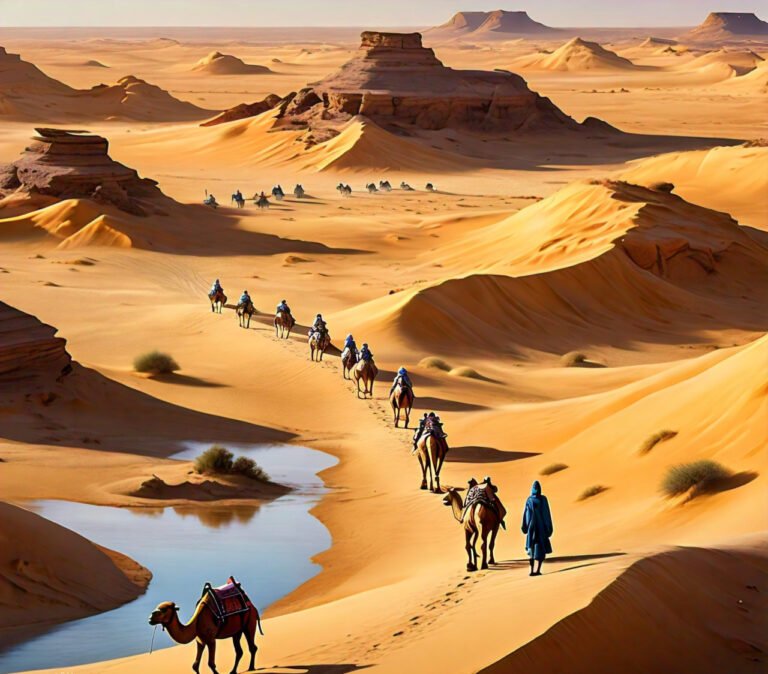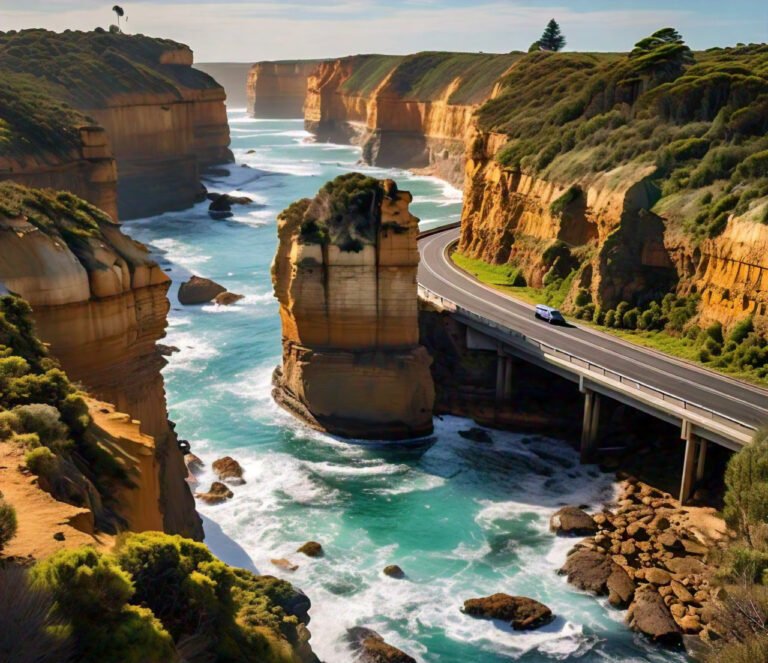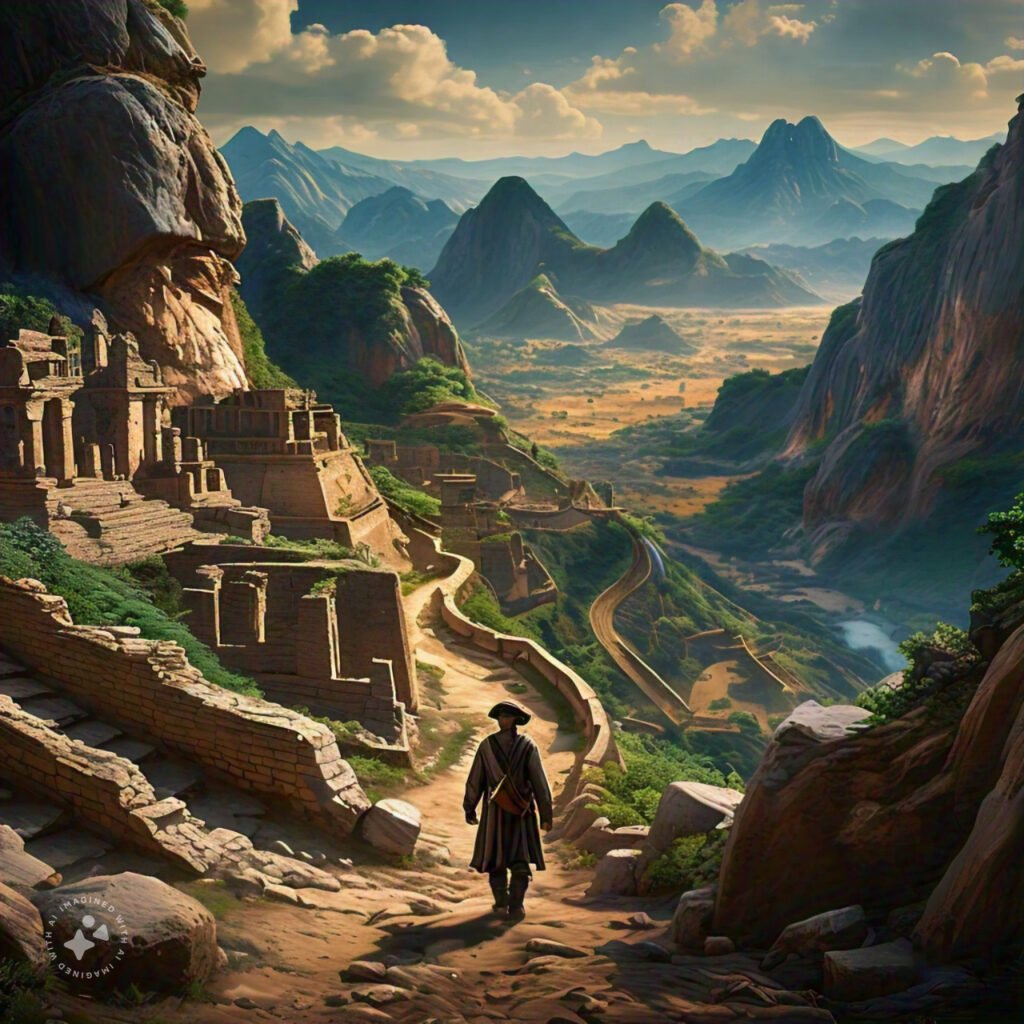Epic Journeys: Exploring Legendary Historical Routes Around the World
Throughout history, humanity has charted paths through rugged landscapes, across vast oceans, and through challenging terrains in pursuit of discovery, conquest, trade, and cultural exchange. These journeys have shaped the course of civilizations, left indelible marks on the world, and continue to inspire adventure seekers and historians alike. In this article, we’ll explore some of the world’s most legendary historical routes that have become symbols of resilience, curiosity, and ambition.
1. The Silk Road: The Bridge of East and West
1.1 The Birth of the Silk Road
The Silk Road was not a single road but rather a network of ancient trade routes that connected China with the Mediterranean world. It spanned thousands of miles, linking diverse cultures, goods, and ideas across continents. Starting in the 2nd century BCE, this route became vital in the exchange of not only silk but also spices, textiles, precious metals, and knowledge.
1.2 Key Highlights of the Silk Road
- The Taklamakan Desert: A major section of the Silk Road, this desert was notorious for its scorching heat and treacherous sandstorms.
- Samarkand: One of the most important trading cities along the Silk Road, Samarkand became a cultural hub and a center of Islamic learning.
- The Great Wall of China: As a defensive measure, the Great Wall protected the routes from nomadic invasions, ensuring the safety of traders and travelers.
1.3 The Legacy of the Silk Road
The Silk Road allowed not just material goods but also intellectual and cultural exchanges, contributing to the spread of religion (especially Buddhism), art, and scientific knowledge across vast regions.
2. The Inca Trail: Journey Through the Andes to Machu Picchu
2.1 Inca Civilization and the Importance of the Trail
The Inca Trail was a network of roads and pathways that spanned the Andean mountains, connecting the heart of the Inca Empire, Cusco, to the sacred city of Machu Picchu. This route, built by the Incas in the 15th century, was not only for trade but also for ceremonial purposes.
2.2 The Route’s Key Features
- Dead Woman’s Pass: The highest point of the trail at over 4,200 meters (13,780 feet), this pass offers breathtaking views of the surrounding mountains.
- Sun Gate (Inti Punku): The entrance to Machu Picchu, where travelers could first glimpse the ancient city as they reached the final stretch of the trail.
2.3 Cultural Significance of the Inca Trail
This trail not only served as a physical route but also as a spiritual path, with many travelers in ancient times walking it in reverence to the gods, particularly the sun god Inti. The Inca Trail remains a powerful symbol of the connection between nature, religion, and civilization.
3. The Viking Routes: Norse Exploration and Expansion
3.1 The Vikings: Masters of Navigation
The Viking Routes stretch across Scandinavia, the North Atlantic, and into the heart of Europe. From the 8th to the 11th century, the Vikings were not just raiders but also traders, explorers, and settlers. Their advanced maritime technology allowed them to journey far beyond their homelands, leading to the discovery of new territories.
3.2 Key Viking Routes and Discoveries
- The North Atlantic: Vikings traveled from their Scandinavian homelands to Iceland, Greenland, and even North America, landing in what is now Newfoundland around 1000 CE.
- The Volga River: This route through Russia allowed the Vikings to trade and establish connections with the Byzantine Empire and the Caliphates.
3.3 The Impact of Viking Exploration
Viking exploration reshaped European and Atlantic history, forging connections between disparate civilizations and laying the groundwork for the development of medieval Europe.
4. The Trans-Saharan Trade Routes: Across the Desert Sands
4.1 The Role of the Sahara in Trade and Culture
The Trans-Saharan Trade Routes were crucial in the exchange of goods, knowledge, and culture between sub-Saharan Africa and the Mediterranean world. Spanning the vast Sahara Desert, these routes connected ancient kingdoms like Ghana, Mali, and Songhai with traders from the north, including those from the Arab world.
4.2 Key Features of the Trans-Saharan Routes
- Timbuktu: Located in modern-day Mali, this city became a center for Islamic learning and a major trading post along the northern route.
- Camel Caravans: The camel, known as the “ship of the desert,” was the key to traversing these arid routes, carrying precious goods like gold, salt, and ivory.
4.3 The Influence of the Trans-Saharan Routes
These routes not only facilitated the movement of goods but also enabled the spread of Islam across Africa, fostering cultural and intellectual exchanges that transformed the region.
5. The Roman Roads: Engineering Marvels of Antiquity
5.1 The Roman Empire’s Road System
The Romans were master engineers, and their road system was one of their greatest achievements. Spanning over 250,000 miles at its height, Roman roads connected the farthest reaches of the empire, enabling efficient military movement, trade, and communication.
5.2 Famous Roman Roads and Their Influence
- The Appian Way: Known as the “Queen of Roads,” this route connected Rome to the southern regions of Italy and became a symbol of Roman power.
- The Via Augusta: Stretching from Italy to Spain, this road was vital for the Roman military and commercial activities.
5.3 The Legacy of Roman Roads
Roman roads were not only used for military purposes but also for the dissemination of Roman culture, law, and architecture throughout Europe, many of which are still in use today.
6. The Camino de Santiago: A Pilgrimage Across Europe
6.1 Origins of the Camino de Santiago
The Camino de Santiago is one of the most famous Christian pilgrimage routes in the world, leading to the tomb of Saint James in Santiago de Compostela, Spain. It dates back to the 9th century and has attracted millions of pilgrims over the centuries.
6.2 The Routes of the Camino
- The French Way: The most popular and historic route, beginning in Saint-Jean-Pied-de-Port in France and crossing the Pyrenees into Spain.
- The Portuguese Way: This route begins in Lisbon and travels through northern Portugal and Galicia in Spain.
6.3 Spiritual and Cultural Significance
The Camino de Santiago is not just a physical journey but a spiritual one. Pilgrims walk these paths seeking personal reflection, penance, or simply as a quest for spiritual enlightenment. The route also represents a powerful connection between different cultures, as it crosses several regions and languages.
7. The Great Ocean Road: A Coastal Adventure in Australia
7.1 The Creation of the Great Ocean Road
The Great Ocean Road in Australia is not ancient but a modern journey, built between 1919 and 1932 as a memorial to those who died in World War I. This iconic road runs along the southeastern coast of the Australian continent and offers some of the most spectacular coastal views in the world.
7.2 The Attractions of the Great Ocean Road
- The Twelve Apostles: These towering limestone formations off the coast are one of the most recognized natural landmarks in Australia.
- Great Otway National Park: Offering lush rainforests and waterfalls, this park is part of the road’s stunning scenic drive.
7.3 The Significance of the Route
While not ancient, the Great Ocean Road has become a symbol of Australia’s natural beauty and a testament to human perseverance and engineering, drawing millions of visitors each year.
Conclusion
The historical routes we’ve explored in this article are much more than pathways through which trade or exploration took place. They represent the human spirit of adventure, resilience, and connection. These routes have brought together cultures, facilitated the exchange of ideas, and led to monumental historical changes. Today, many of these routes are still traveled, preserving their legacy and reminding us of the extraordinary journeys that shaped our world.
As we continue to chart new paths for exploration and discovery, we can look back at these legendary routes with awe, recognizing their profound impact on human history and their enduring relevance in the modern world.





